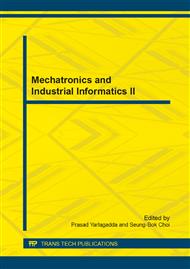p.204
p.209
p.216
p.222
p.226
p.230
p.234
p.241
p.245
Targets Detection Based on Multifractal Method
Abstract:
Mean sea clutter scattering coefficient model can reflect the relationship between the scattering coefficient of sea clutter and radar parameters and environmental factors, commonly used at sea clutter radar range forecasts. Sea clutter amplitude distribution model is essentially in the form of a probability density function to describe the magnitude of the statistical properties of sea clutter. In this paper, based on the sea surface target detection process uncertain information based on multiple objective study of fractal theory, simulation results show that our detection methods to get good results, you can improve the reliability and intelligence of detection.
Info:
Periodical:
Pages:
226-229
Citation:
Online since:
July 2014
Authors:
Keywords:
Price:
Сopyright:
© 2014 Trans Tech Publications Ltd. All Rights Reserved
Share:
Citation:


